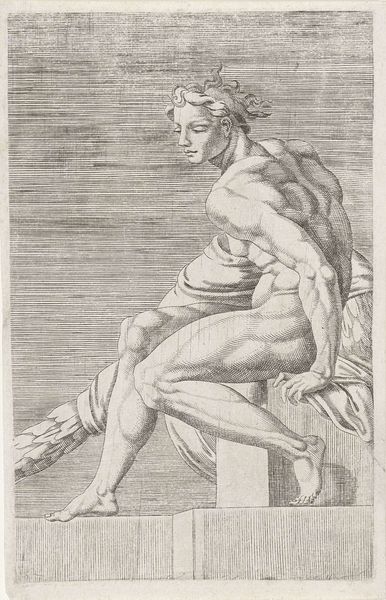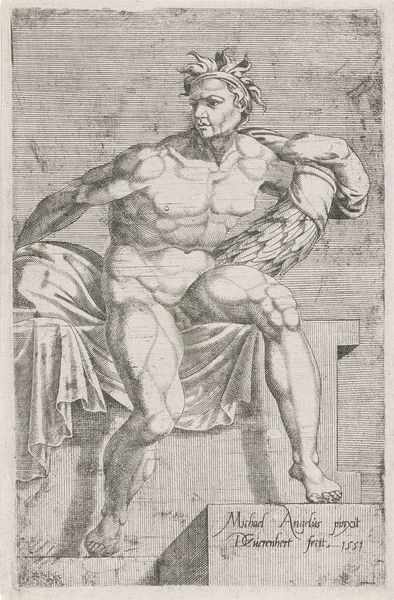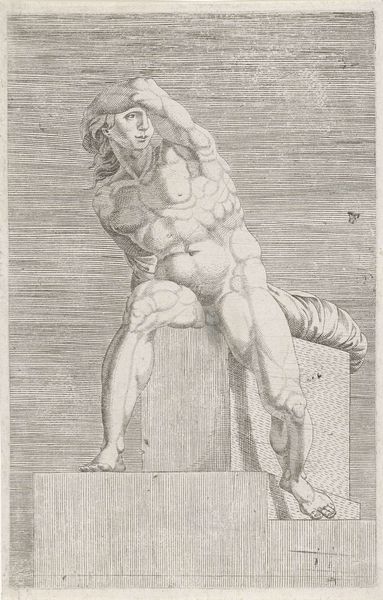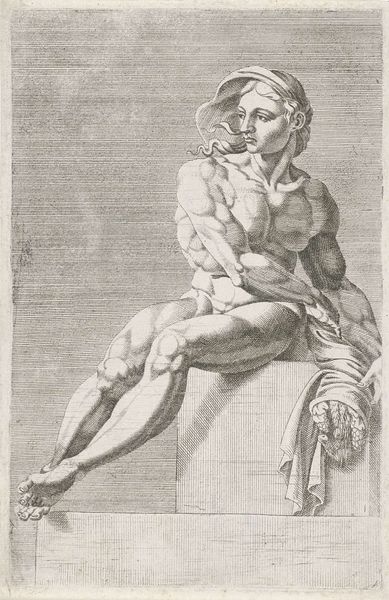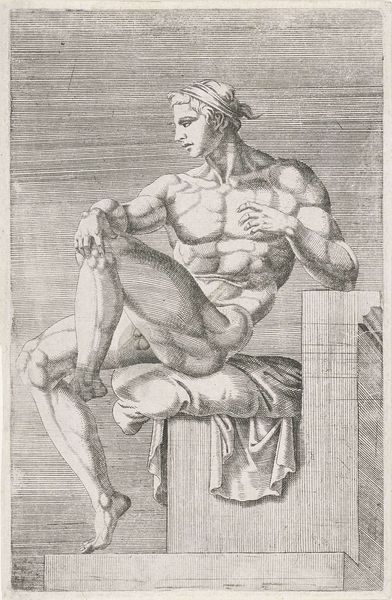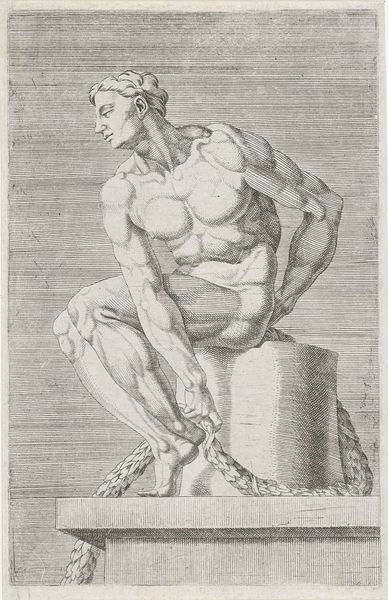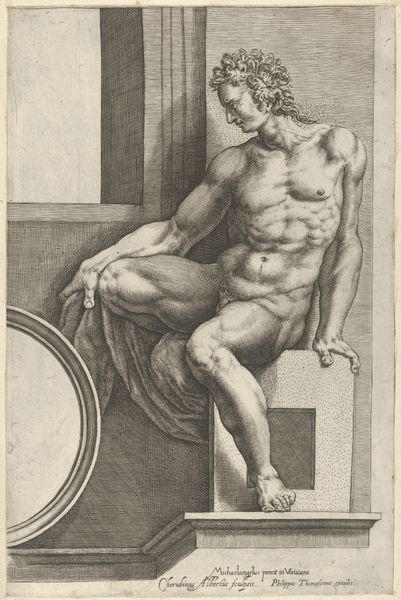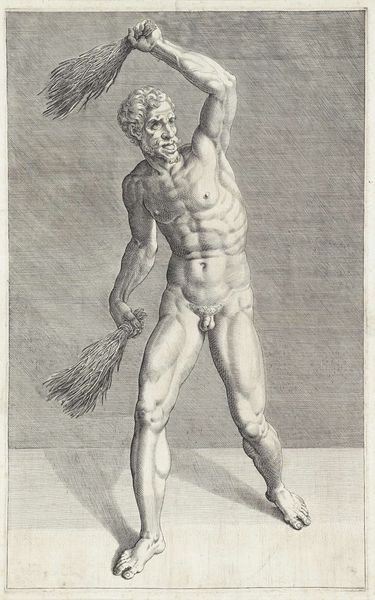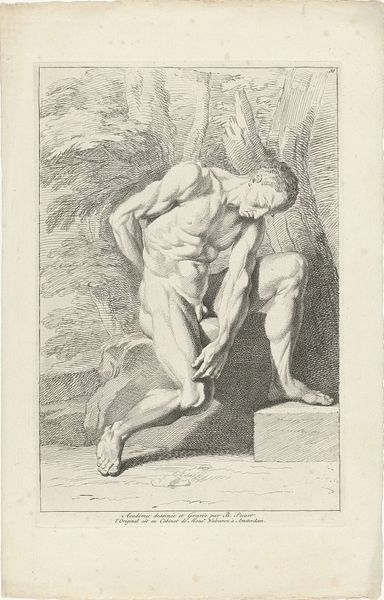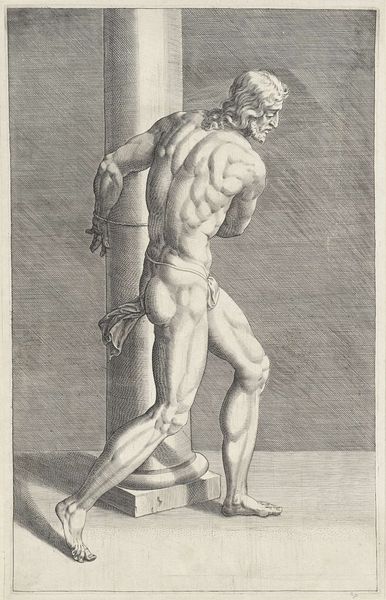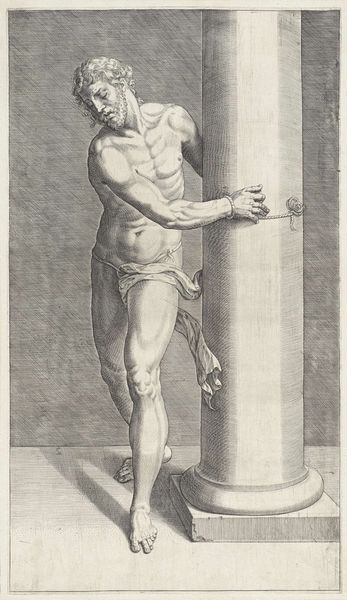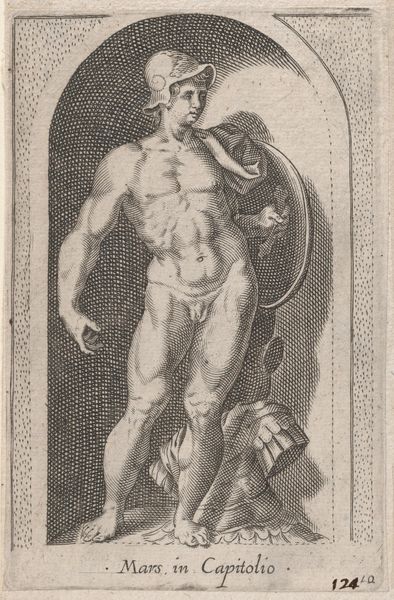
print, engraving
# print
#
classical-realism
#
figuration
#
11_renaissance
#
history-painting
#
nude
#
engraving
Dimensions: height 216 mm, width 139 mm
Copyright: Rijks Museum: Open Domain
Editor: This is "Zittend naakt uit de Sixtijnse kapel" from 1551, an engraving by Dirck Volckertsz Coornhert, housed in the Rijksmuseum. The figure looks powerful, classical almost, but also seems confined somehow. I am interested in understanding it better. What do you make of it? Curator: Well, the materiality of this print offers a fascinating point of entry. Consider the labor involved in producing an engraving like this back then. The precision required to transfer Michelangelo's idealized form onto a copper plate, and then the multiplication of that image through printmaking. Editor: That’s a good point, it looks like hard work and technical know-how. But what does that have to do with the image itself? Curator: It's not separate! Think about the intended audience. These prints circulated widely, making the Sistine Chapel's art accessible to a broader public, consuming this idealized male form as a commodity. It changes the work’s function and thus, the very meaning of Michelangelo's original fresco. The artist, the engraver, and the viewer participate in this process, creating cultural values and reinforcing historical structures through consumption. Does that change how you see the "power" and "confinement" you mentioned? Editor: It does make me consider the accessibility aspect more. The ability to share the idealized form far and wide. Was it just about that though? Or did this method have implications for artistic practice more broadly? Curator: Absolutely, it influenced it profoundly! It separated labor across artistic creation. With reproductive prints such as this, artists became removed from singular creation, with an artist like Michelangelo making initial art and someone else producing this engraving. Editor: So, it shows that even in the 16th century art-making was being industrialized. Thanks, I am really considering this print in an entirely different way. Curator: Indeed! It highlights the impact of material processes and the circulation of images on art, which continues to echo today.
Comments
No comments
Be the first to comment and join the conversation on the ultimate creative platform.
